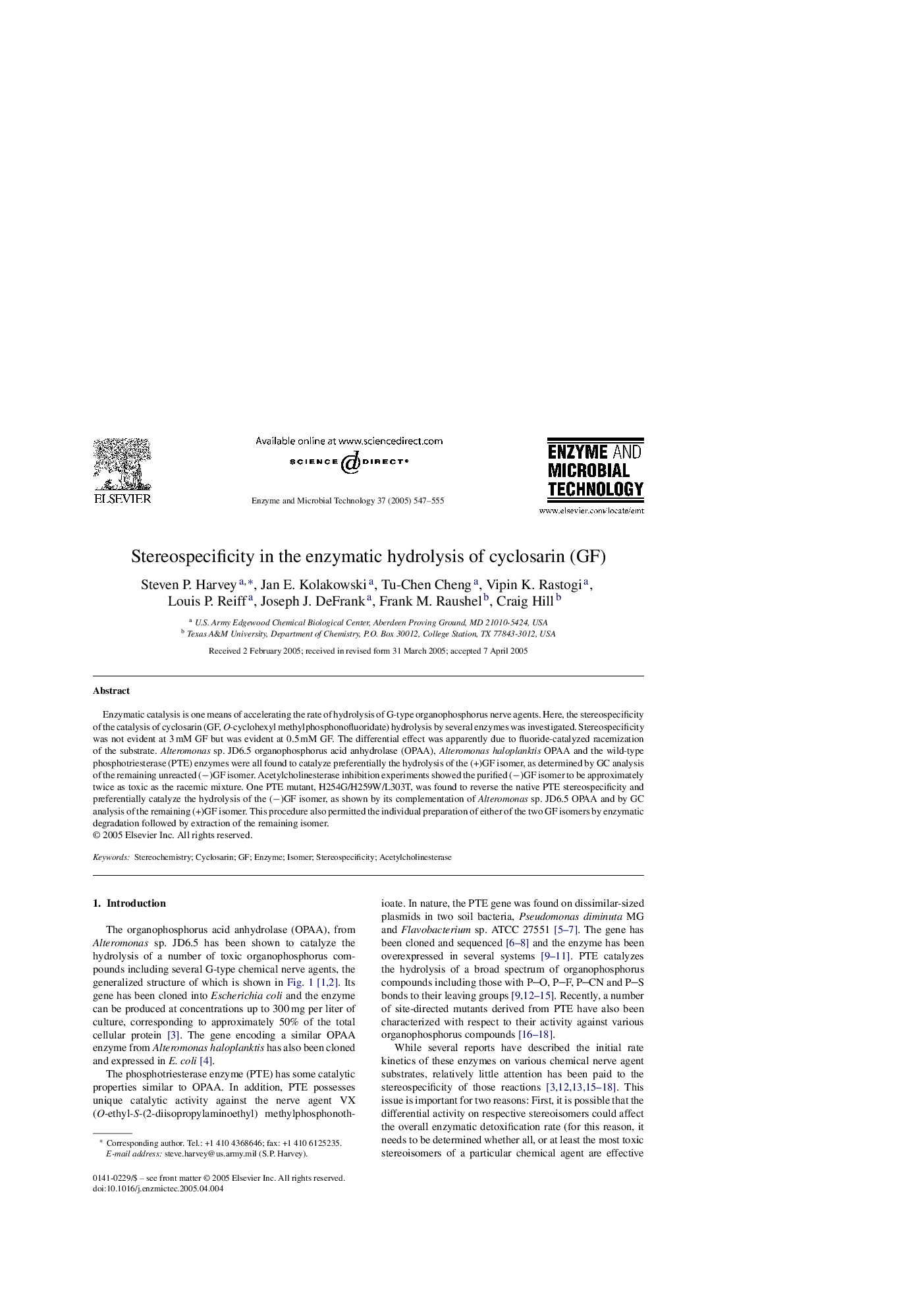| Article ID | Journal | Published Year | Pages | File Type |
|---|---|---|---|---|
| 10233306 | Enzyme and Microbial Technology | 2005 | 9 Pages |
Abstract
Enzymatic catalysis is one means of accelerating the rate of hydrolysis of G-type organophosphorus nerve agents. Here, the stereospecificity of the catalysis of cyclosarin (GF, O-cyclohexyl methylphosphonofluoridate) hydrolysis by several enzymes was investigated. Stereospecificity was not evident at 3Â mM GF but was evident at 0.5Â mM GF. The differential effect was apparently due to fluoride-catalyzed racemization of the substrate. Alteromonas sp. JD6.5 organophosphorus acid anhydrolase (OPAA), Alteromonas haloplanktis OPAA and the wild-type phosphotriesterase (PTE) enzymes were all found to catalyze preferentially the hydrolysis of the (+)GF isomer, as determined by GC analysis of the remaining unreacted (â)GF isomer. Acetylcholinesterase inhibition experiments showed the purified (â)GF isomer to be approximately twice as toxic as the racemic mixture. One PTE mutant, H254G/H259W/L303T, was found to reverse the native PTE stereospecificity and preferentially catalyze the hydrolysis of the (â)GF isomer, as shown by its complementation of Alteromonas sp. JD6.5 OPAA and by GC analysis of the remaining (+)GF isomer. This procedure also permitted the individual preparation of either of the two GF isomers by enzymatic degradation followed by extraction of the remaining isomer.
Related Topics
Physical Sciences and Engineering
Chemical Engineering
Bioengineering
Authors
Steven P. Harvey, Jan E. Kolakowski, Tu-Chen Cheng, Vipin K. Rastogi, Louis P. Reiff, Joseph J. DeFrank, Frank M. Raushel, Craig Hill,
